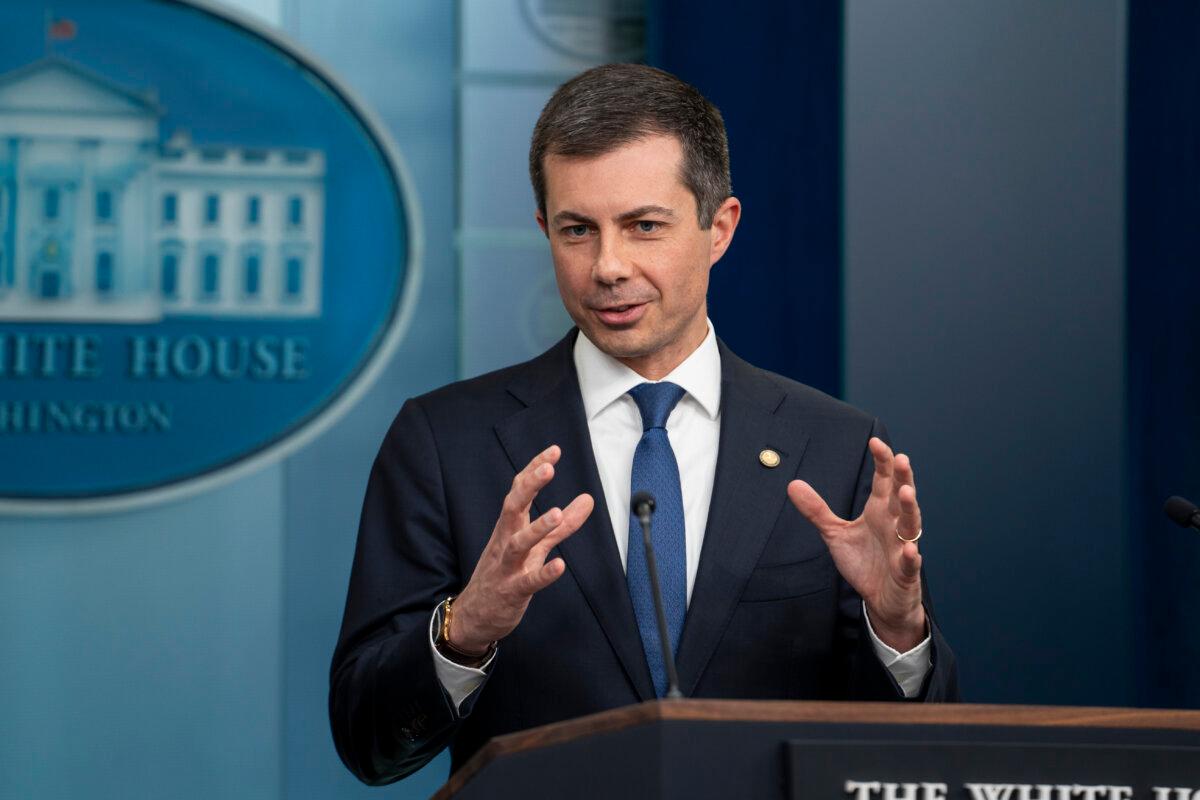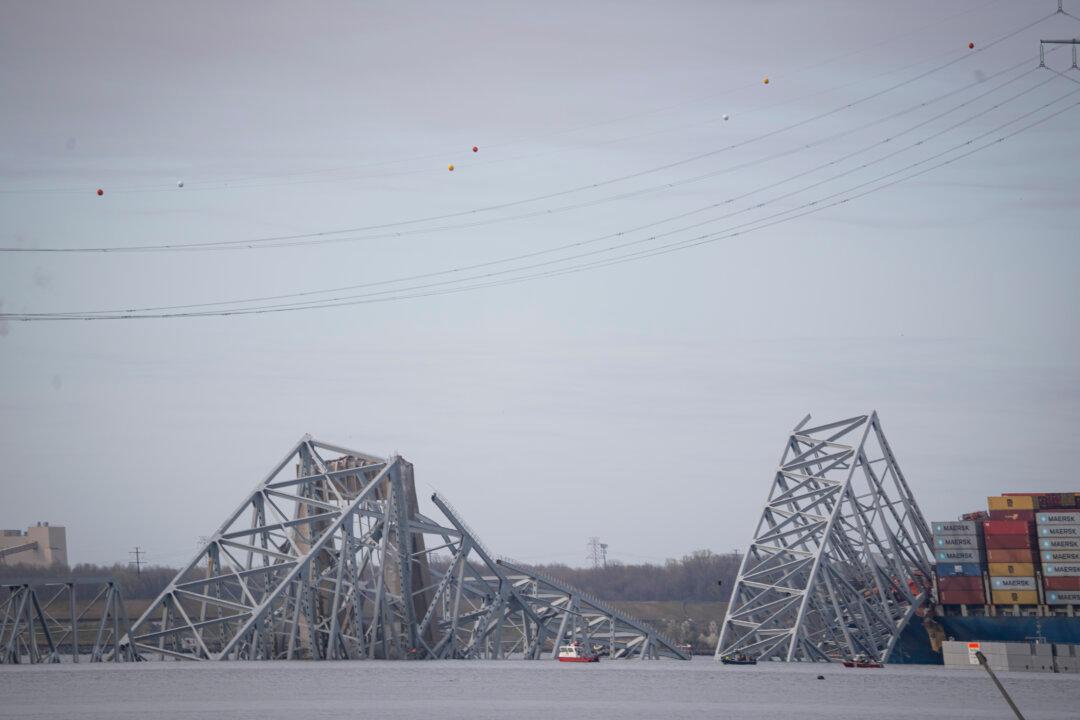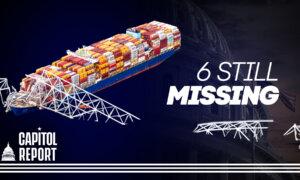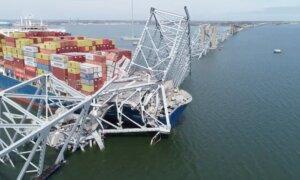Federal officials are not prepared to speculate on when the Port of Baltimore will be open again, but there is a financial urgency to open as soon as possible.
The port is responsible for nearly $3.3 billion in personal wages and salaries, $2.6 billion in business revenue, and nearly $400 million in state and local tax revenue annually. That is roughly $1.09 million in tax revenue a day.
And on an individual level, it comes down to personal paychecks.
“With no cargo coming in or out—until they open the channel—there will be a point when they'll completely close down the loading and unloading operation, which is pretty catastrophic for the members of the ILA who work on the waterfront,” Rich Krueger, president of the International Longshoremen’s Association (ILA) Local 953, told The Epoch Times.
They are the clerks and checkers who handle the complex paperwork involved with international cargo. Some 250 union members of this union work at the Baltimore Harbor, and other unions represent other workers there.
Assessing the Vessel
Access to the port was suddenly blocked March 26, when the container ship Dali, departing the port, struck a support tower of the Francis Scott Key Bridge around 1:30 a.m., causing it to collapse into the Patapsco River.A total of eight contractors working on the bridge deck fell into the water; two were rescued, and six are presumed dead. Their bodies have not been recovered. The U.S. Coast Guard continued the effort March 27 to recover their remains.
“Even as families come to terms with that grief, and even as those recovery operations continue, work is underway to investigate what happened and to restore the key transportation resources that were impacted,” U.S. Secretary of Transportation Pete Buttigieg said Wednesday in a White House briefing.
He noted there are two timelines: reopening the port and rebuilding the bridge.
“Reopening the port is a different matter from rebuilding the bridge. The port, that’s just a matter of clearing the channel. Still no simple thing, but I would expect that can happen on a much quicker timeline than the full reconstruction of the bridge,” Mr. Buttigieg said. When pressed for a timeline of days, weeks or months, he said he is asking those same questions and cannot say yet.

The Army Corps of Engineers and the Coast Guard will take the lead on removing bridge debris from the channel.
President Joe Biden, Mr. Buttigieg, and Army Corps of Engineers Lt. General Scott Spellmon had a phone call Tuesday, while Mr. Spellmon was at the scene in Baltimore to assess the catastrophe. He managed the mobilizing of equipment, conducting analysis of underwater surveys, continued stabilizing the vessel, mitigating of the pollution threat, and removing the vessel from the area.
The vessel is stable, Mr. Buttigieg said, but it still has over 1.5 million gallons of fuel oil onboard, plus 4,700 cargo containers, including 56 with hazardous materials.
Two containers are missing after going overboard. Those did not contain hazardous, he said, and the public is not in danger from the materials.
At the time of the incident, around 12 ships we in the Baltimore Harbor and remain stranded there, Coast Guard Vice Admiral Peter Gautier said during the briefing. Their cargo may be off-loaded and put on trucks to be sent to the next destination.
Shipping companies destined for Baltimore are diverting cargo to other ports along the east coast, but Salvatore R. Mercogliano, a professor who analyzes maritime commerce at Campbell University in Buies Creek, North Carolina, says that could be risky business.
“There is a long term fear [in Baltimore,] they may lose business permanently because of this. And that’s because they’re saying in New York/New Jersey, you can just shift your cargo here,” Mr. Mercogliano told The Epoch Times. Competition is fierce in the shipping industry where there is a finite amount of cargo to go around.
Economic Driver
The Port of Baltimore handles between $100 million and $200 million worth of cargo a day, and, according to Maryland State Senate President Bill Ferguson, more than 15,000 people in the Baltimore region rely on daily operations at the port to put food on the table. In a social media post, Mr. Ferguson announced that he and state Rep. Luke Clippinger were drafting an emergency bill to provide income replacement for affected workers.“Yesterday I spent hours talking to labor leaders, dock workers, small business owners, and large port industry leaders who all had the exact same message: ‘We must unlock the channel to the Port of Baltimore.’ They’re right. And until we do, there is enormous cost to families,” Mr. Ferguson posted.
Paying for the recovery and rebuilding efforts will be no small feat. Funding sources could come from a mix of the state and federal government, the companies responsible and their insurance companies. It could take a while to put that funding in place.
Once the National Transportation Safety Board’s investigation into how the collapse happened is completed, any companies liable will be held financially responsible, Mr. Buttigieg said, but President Biden does not want to tie that funding to the timeline for restoration.
The state of Maryland got the ball rolling Wednesday by making an emergency relief funding request to the federal government.
“Our Federal Highways team is working with them to start looking at design and procurement,” Mr. Buttigieg said of bridge reconstruction during a CNN interview. “Meanwhile, on the port front, that’s really the most acute short term concern, especially for the workers who are impacted. About $2 million a day in wages depend on the work that goes on in that port. While it is not the largest container port in the U.S., it is the busiest vehicle for it.”
He hopes to get the funding without the delay of red tape.







